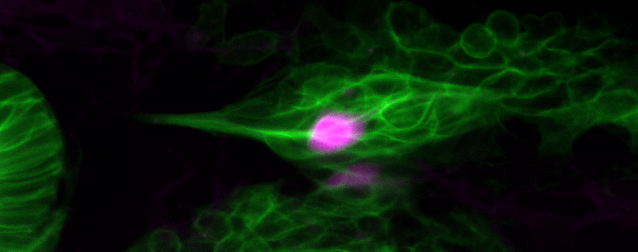
Current Research
How does the peripheral sensory system connect to the CNS during development to relay stimuli like sound, touch, and pain?
What cellular and molecular processes, such as cell migration, neuronal specification, and circuit formation, drive sensory system development?
How can studying these processes in zebrafish reveal mechanisms of drug-induced peripheral neuropathies?
How do pioneer neurons regulate axonal growth and sensory circuit formation during development?
Pioneer axons are the first to grow into a particular region, guiding nervous system development. Despite their importance, our understanding of the molecular mechanisms controlling pioneer neurons in vivo is limited due to a lack of specific markers. Using single-cell RNA sequencing in zebrafish, we identified two distinct populations of peripheral sensory neurons. One subpopulation was confirmed as pioneers using a transgenic reporter. We are investigating the lineage relationship, molecular signals, and physiological properties distinguishing pioneers from followers. Understanding pioneer neuron differentiation will help identify therapeutic targets for nerve injury and regeneration.
Mechanisms of small fiber peripheral neuropathies
Peripheral sensory neurons are vulnerable to damage from disease or drugs, leading to peripheral neuropathies, including small fiber neuropathy (SFN). SFN affects skin-innervating axons responsible for temperature and pain sensation, with causes ranging from metabolic disorders to chemotherapies. Despite its prevalence and severe impact on quality of life, no effective treatments exist. A challenge in studying SFN is the lack of understanding of how different neuron subtypes are affected in vivo. Using zebrafish Rohon-Beard neurons as a model, we identified distinct neuronal subtypes resembling those affected in SFN and are examining their responses to chemotherapeutics.
Pioneer neurons extending axons during development
Single cell analysis of post-transcriptional mRNA modifications in sensory neurons
Neural fine-tuning is critical for a functional nervous system, and one mechanism is A-to-I RNA editing, where adenosine is converted to inosine by ADARs, altering protein coding and neural circuits. A-to-I editing impacts key neuronal mRNAs, including those involved in synaptic transmission and signal transduction. It's essential for brain development, with abnormal editing linked to diseases like epilepsy and ALS. Our research found ADAR expression correlates with post-synaptic Ca2+ responses in pioneer neurons. We're testing the hypothesis that differential A-to-I editing creates distinct physiological properties in sensory circuits using novel profiling techniques and ADAR activity manipulation.
